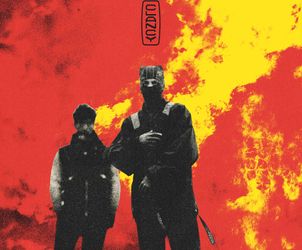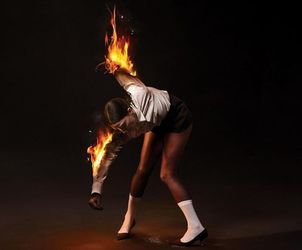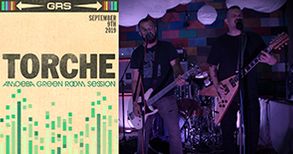What's New
View All-
New Music We Like Lists
Check out our staff’s new Music We Like lists of their favorite music & movies for Spring 2024. View
Sell Us Your Vinyl!
Amoeba Hollywood needs your vinyl records. Top prices paid! View
Where To Park at Amoeba Hollywood
Amoeba Hollywood validates 75 minutes with purchase for the parking garage at the El Centro complex. Enter on on Argyle, just half a block south of Amoeba. View
-
Free U.S. Shipping
We're excited to announce that Guayakí Yerba Mate is our brand new free shipping sponsor! Music and movies ship free to the U.S. thanks to their help. View
Job Opportunities at Amoeba
Want to work at Amoeba? Take a look at the current job openings at our Hollywood and San Francisco stores. View
View More
Live at Amoeba
View All-
Watch Miami rock band Torche perform a loud, heavy set from their fifth album Admission live in the Amoeba Hollywood Green Room!

Kamasi Washington Listening Party
Today 5pm - San Francisco
San Fermin
May 4th 3pm - San Francisco
Jessica Pratt
May 8th 5pm - Hollywood
WILLOW
May 14th 5pm - Hollywood
-

End (CD)
Explosions In The Sky
The enigmatic new album by Explosions in the Sky is a loud, dramatic, wild rumination on life and death. Melding the quiet restraint and crushing feel of the band's early releases with the sonic texturing and ornate experimentation of their later releases, End is also influenced by everything from classical to soul to experimental ambient music.

Thoughts & Prayers (CD)
CNTS
LA punk rockers CNTS return with Thoughts & Prayers , a fiery follow-up to 2019's self-titled debut. Vocalist Matt Cronk, fully recovered from a brutal auto accident, is back in fine form and unleashes the fury, while the band sears on track after track of noisy, hooky, raucous aggression.

$10 Cowboy (CD)
Charley Crockett
Need an antidote to overly polished, corporate country? Charley Crockett is your man. The Texan singer and guitarist delivers an updated blend of Americana and country that sounds as classic as the legendary artists of the '50s and '60s...albeit with a bit more blues, rock, and R&B in the mix. $10 Cowboy builds on Crockett's excellent earlier albums; the songwriting is evocative and transportive, the atmosphere as electrifying and intriguing as a midnight drive on a lonely highway. Crockett is the real deal and $10 Cowboy is a must-hear.

Glovemaker (CD)
Loren Kramar
Loren Kramar's Glovemaker is the type of bigger-than-life, character-driven album that feels like it came from a bygone era. Kramar sings of love, longing, and fame and the intersection of the three, infusing his songs with classic R&B, soul, and lounge sounds. He paints worlds filled with huge emotions, deep desires, and a fair share of humor. As an artist, he calls to mind figures like Serge Gainsbourg, Scott Walker, and Lana Del Rey: sultry, kooky, gleefully teetering on the verge. Glovemaker is your ideal soundtrack for driving to the Polo Lounge with perfect hair, a studio deal, and an Eve Babitz paperback.
-

Luther's Blues (CD)
Bernard Allison
Bernard Allison puts his own spin on his father Luther Allison's oeuvre via Luther's Blues . This is a scorcher of an album, fusing Chicago blues with hard and heavy, almost psychedelic rock 'n' roll. Luther's Blues is thoroughly enjoyable, a high-octane thrill ride that sounds like the wildest night of your life. Turn this one up loud and crank the AC because things are about to get sweaty.

Lahai (CD)
Sampha
Sampha's Lahai works some powerful sonic magic. These underground R&B meets electronic tracks are the type of low-key feel-good tracks that up the mood for any occasion...but this listening experience is no short-lived high. Inspired by the passage of time and by finding joy and creativity in the midst of chaos, the South London singer/songwriter/producer brings curiosity and beauty to the everyday. These songs feel sensual, comforting, and optimistic. On Lahai , Sampha seems to be marveling at the wonders of a day-to-day that may at first seem anything but marvelous when you're in the thick of it. Put this album on and you'll be able to transmit some of that wonder into your own environment.
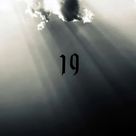
Hard Light [Crystal Clear Vinyl] (LP)
Drop Nineteens
Every once in a while, an album comes along that's such a surprising delight it goes into heavy rotation from the very first spin. That's Hard Light from Drop Nineteens. The Boston-based noise-pop/shoegaze band originally operated in the early '90s, eventually becoming something of a rediscovered cult sensation during the streaming era. Now, they're back together and writing new material that also deserves instant cult status. You'll find haunting, wistful, and catchy-as-all-get-out tracks here, with the otherworldly vocals of Paula Kelley alternating with those of fellow guitarist/vocalist Greg Ackell for a listening experience that'll keep you on your toes in the best way possible. An album to get lost in. Highly recommended.

Teething (CD)
Porij
Porij's Teething sounds like falling in love. The UK four-piece combines garage, house, nu-jazz, and electro-pop into lush, dreamlike tracks. "Ghost" is soft and intimate, a track as tender as it is bittersweet. With its whispered vocals and heartbeat rhythms, "You Should Know Me" starts off like the soundtrack to the afterparty after the afterparty before bursting into gleeful ravey abandon. "My Only Love" is hushed and wondrous and a conversation overheard between two lovers. Teething is a captivating slice of electro, with an appreciation for the brief, beautiful moments in life, and an ability to craft a mood that'll linger long after the record stops spinning.
-

All Born Screaming (CD)
St. Vincent
St. Vincent gets dark on All Born Screaming . Annie Clark has said that the songs are about metaphorical heavens and hells and that's certainly the vibe of this adventurous, invigorating new album. Clark recruited Dave Grohl and Cate Le Bon for what she has called a "plague-pop" outing. It's a fitting moniker: the exuberance, the anxiety, the high highs and low lows are all there. Clark gets industrial and intense, danceable and delirious. All Born Screaming is an exciting sonic evolution for an artist who's not afraid to push the limits.

Bewitched: The Goddess Edition (CD)
Laufey
Transform your existence into a more glamorous, romantic, and retro one with Laufey's Bewitched: The Goddess Edition . The Icelandic artist creates dreamy vocal jazz that sounds like it could've come straight out of the Golden Age of Hollywood, or from the songbook of legends like Sarah Vaughan or Ella Fitzgerald. The songs move from sweeping and grand to intimate and vulnerable, with a dash of bossa nova and classical mixed into her throwback jazz sound. While Bewitched was a 2023 GRAMMY winner, The Goddess Edition features four stellar new tracks, including the titular single, "Goddess." Turn down the lights, put on something pastel, and enter Laufey's marvelous, magical world.

Ilion (CD)
Slift
French heavy proggers Slift are back with their third masterpiece, Ilion . Opening the album with the epic, sprawling 11-minute title track, this is an album that has a story to tell, and with no track under 8 minutes, Slift allow these songs to slowly unfurl and breathe. Fans of Melvins, Tool, Mars Volta and Baroness will not want to miss one.
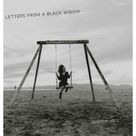
Letters From A Black Widow (CD)
Judith Hill
Letters From a Black Widow is the exhilarating new album from Judith Hill. The GRAMMY-winning singer-songwriter, multi-instrumentalist, backing vocalist (Michael Jackson, Prince), and former The Voice contestant has the voice of a legend. Hill's songwriting is epic as well: these tracks tell tales of turmoil, resilience, and redemption, all rooted in Hill's real life struggles and emotional liberation. It's a fierce, brave, brilliant record, a lively blend of blues, funk, and soul that should make Hill a household name.

